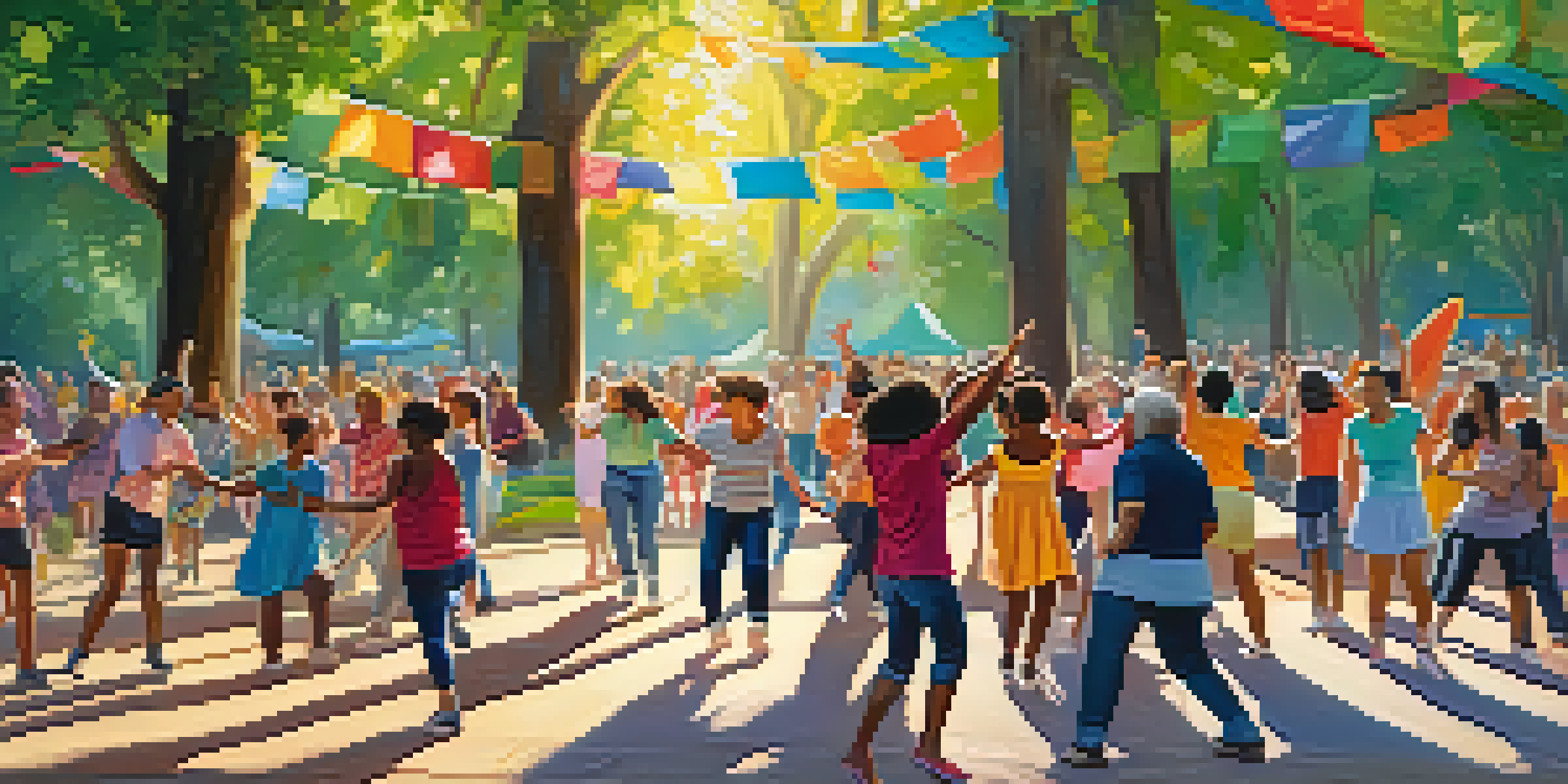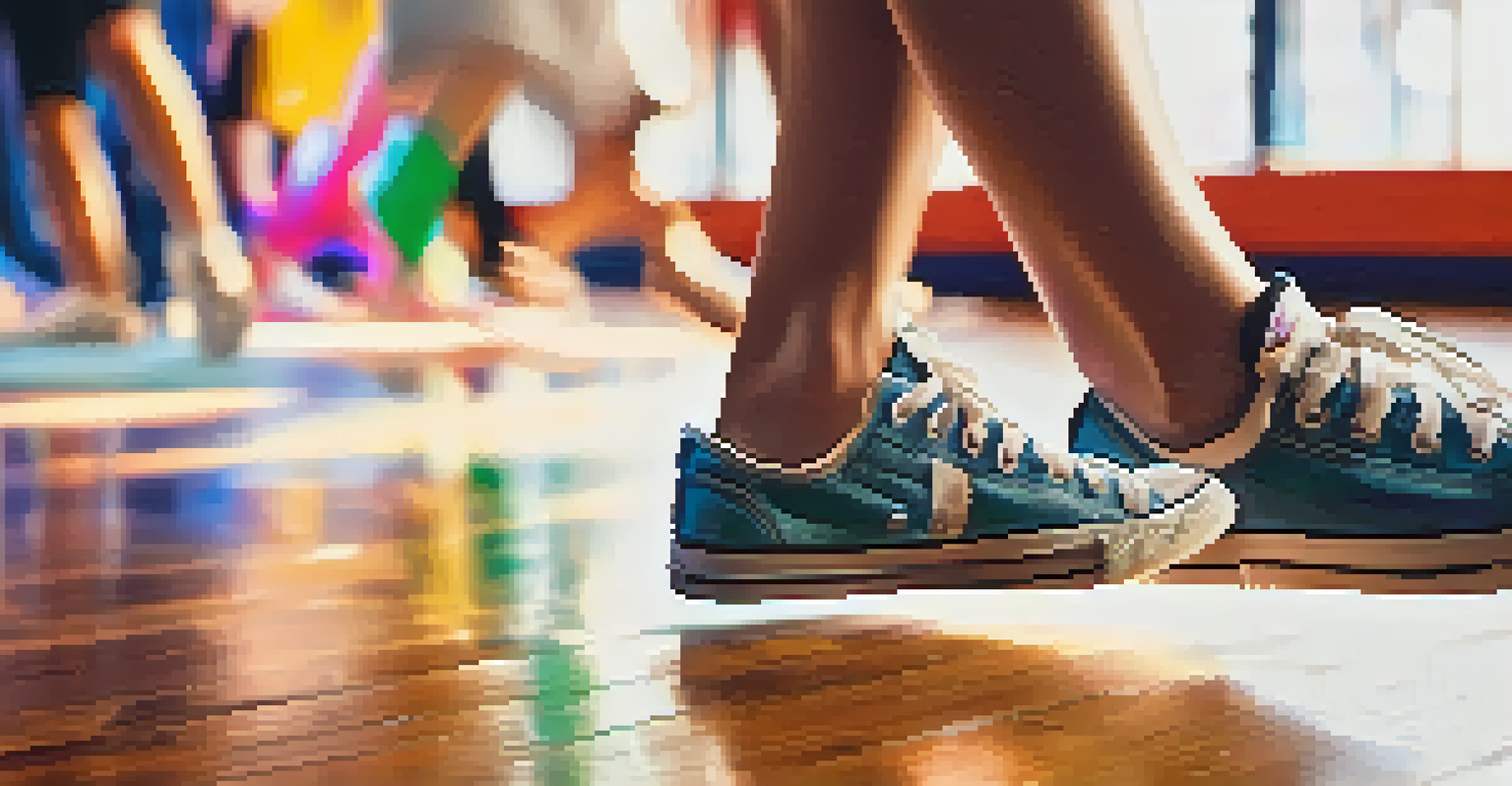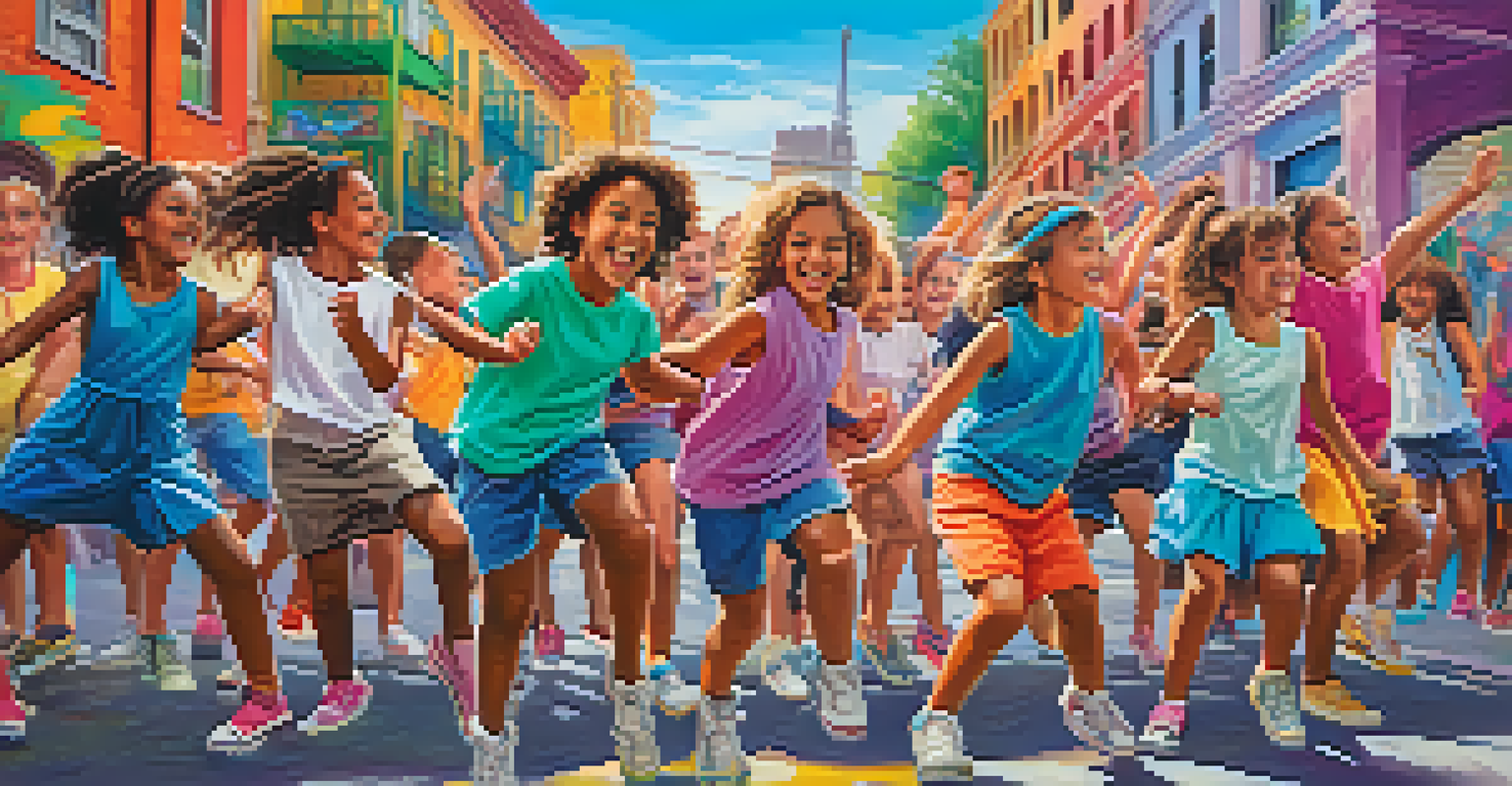Integrating Dance into Public Health Campaigns for Better Reach

Dance: A Universal Language for Health Communication
Dance transcends cultural boundaries and speaks to people in a way that words often cannot. It's a form of expression that taps into our emotions, making it a powerful tool for health communication. By integrating dance into public health campaigns, organizations can connect with diverse audiences on a deeper level, making health messages more relatable and memorable.
Dance is the hidden language of the soul.
For instance, a public health campaign addressing mental wellness could incorporate dance workshops, allowing participants to express their feelings through movement. This not only promotes the message but also engages the community in a fun and interactive way. Such initiatives can break down barriers, making individuals more open to discussing health issues.
Moreover, using dance in campaigns helps to create a sense of community and belonging. When people come together to dance, they forge connections, which can lead to greater support for health initiatives. This collective experience can transform how health information is received and acted upon.
Creating Engaging Health Messages Through Dance
Effective health messaging is crucial for awareness and behavior change. By incorporating dance, public health campaigns can turn dry statistics into captivating performances that resonate with audiences. A well-choreographed routine can convey the importance of issues like vaccination or nutrition in a way that sticks with viewers long after the performance ends.

Think about how a flash mob could draw attention to a heart health campaign. The spontaneous joy of dance can captivate bystanders, sparking curiosity and encouraging them to learn more about the message being conveyed. This approach not only educates but also entertains, making health topics less intimidating.
Dance Unites for Health Awareness
Integrating dance into public health campaigns fosters community engagement and makes health messages more relatable and memorable.
Moreover, dance can be tailored to fit various platforms, from social media to community events, ensuring that the message reaches a wide audience. Short dance clips can easily go viral, spreading health awareness far beyond the initial performance. This adaptability makes dance a versatile ally in public health communication.
Building Partnerships with Local Dance Communities
To maximize the impact of dance in public health, forming partnerships with local dance schools and community groups is essential. These collaborations can help create tailored programs that reflect the unique needs and interests of the community. By involving local dancers, campaigns can ensure authenticity and cultural relevance.
Movement is a medicine for creating change in a person's physical, emotional, and mental states.
For example, a campaign focused on diabetes prevention could work with a local hip-hop dance crew to incorporate moves that symbolize healthy choices. This not only promotes the message but also empowers local artists, making them advocates for health within their communities. Such partnerships can lead to innovative and engaging content that resonates with the target audience.
Furthermore, these collaborations can foster a sense of ownership among community members. When people see their peers leading health initiatives through dance, they are more likely to participate and spread the word. This grassroots approach can amplify the reach of public health campaigns significantly.
Dance as a Tool for Overcoming Health Stigmas
Health stigmas can often prevent individuals from seeking help or discussing important issues. Dance can serve as a non-threatening medium to address topics like mental health or addiction. By using dance performances to tell stories, campaigns can humanize these issues and encourage open dialogue.
For instance, a dance piece that narrates personal experiences with mental illness can evoke empathy and understanding among audiences. This emotional connection can be a catalyst for change, prompting people to seek help or support others facing similar challenges. Dance brings vulnerability into the spotlight, allowing for authentic conversations.
Dance Breaks Down Stigmas
Using dance as a storytelling medium can humanize health issues, encouraging open dialogue and reducing stigma.
Additionally, incorporating storytelling through dance can empower those affected by health issues to share their narratives. This not only raises awareness but also normalizes the conversation around stigmatized topics. By fostering a supportive environment through dance, public health campaigns can create lasting change.
Enhancing Physical Activity through Dance Initiatives
Physical activity is essential for overall health, and dance is a fantastic way to get people moving. Public health campaigns can promote dance classes or community dance events as fun alternatives to traditional exercise. This approach can attract individuals who may be intimidated by conventional workout routines.
For example, offering free community dance nights can draw in people of all ages and fitness levels. These events not only provide a fun way to exercise but also help to build social connections. People are more likely to stick with physical activity when it’s enjoyable and community-focused.
Moreover, dance can be a gateway to other healthy habits. As individuals engage more with dance, they may adopt healthier lifestyles overall. This holistic approach to health and wellness can lead to significant improvements in the community's well-being.
Utilizing Social Media for Dance-Driven Health Campaigns
In our digital age, social media is a powerful tool for reaching broad audiences. Dance challenges and trends can go viral, making them an effective strategy for public health campaigns. By creating engaging content that encourages users to participate, campaigns can spread health messages far and wide.
For instance, a campaign could launch a dance challenge that encourages participants to share their moves while discussing a health topic. This not only fosters engagement but also encourages users to learn more about the issue being addressed. The fun, interactive nature of dance can lead to higher participation rates compared to traditional methods.
Social Media Amplifies Dance Impact
Dance challenges on social media create viral engagement, spreading health messages effectively and encouraging community participation.
Additionally, using hashtags and encouraging sharing can amplify the message's reach. When people see their friends participating in a dance challenge, they are more likely to join in. This peer influence can create a ripple effect, spreading health awareness through community-driven efforts.
Measuring the Impact of Dance in Public Health Campaigns
To understand the effectiveness of integrating dance into public health campaigns, measurement and evaluation are crucial. This involves collecting data on participation rates, audience engagement, and behavioral changes as a result of the campaign. By analyzing this information, organizations can refine their strategies for future initiatives.
For example, surveys could be conducted before and after dance events to assess shifts in knowledge or attitudes about health topics. Tracking social media engagement can also provide insights into how far and wide the message has spread. These metrics can help demonstrate the value of using dance as a communication tool.

Ultimately, measuring impact allows public health organizations to showcase success stories and secure funding for future projects. As more data becomes available, the case for incorporating dance in health campaigns will become stronger, paving the way for innovative approaches in public health messaging.